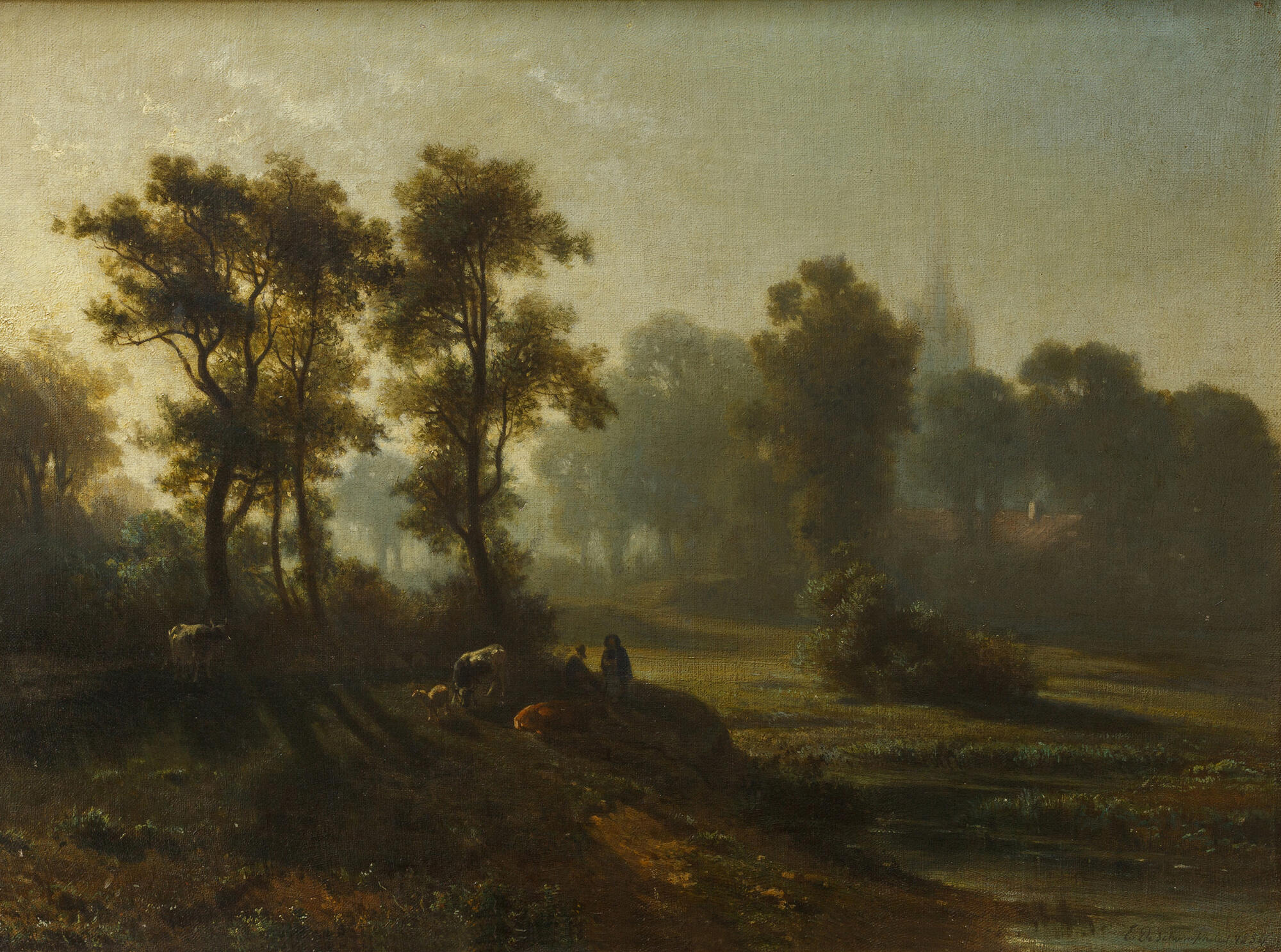Edmond De Schampheleer was a landscape painter and engraver, a representative of the Belgian school of painting. He was born in Brussels in 1824 and studied with Eugène-François de Block in Antwerp. He worked for several years in Munich, painted landscapes, and engraved etchings from originals. His stay in Barbizon, as well as the influence of the landscape painter Théodore Fourmois, determined his painting style. He painted mostly realistic landscapes with lakes. Edmond De Schampheleer traveled much in search of motifs for paintings. Schampheleer’s landscapes and etchings are found in the collections of the British Museum, the Victoria and Albert Museum, and the State Museum of Lower Saxony.
In the 19th century, the realistic landscape was undergoing its formation. In academic painting, landscape had been given a modest role as a background — the scene of the main characters often taken from history or mythology. As for the classical or romantic landscape, it was not characterized by particular attention to nature, with the view often looking artificial: in classicism, it was excessively dull, and in romanticism, on the contrary, it was embellished. In 1831, French artists Théodore Rousseau, Jules Dupré, and Narcisse Diaz presented works at the Paris Salon exhibition that marked a new realistic style in landscape painting. The artists were nicknamed “Barbizon painters” after the name of the village of Barbizon in the forest of Fontainebleau, where Rousseau first came to work on sketches.
The artists asserted the value of landscape as such, the beauty of rural nature, the local landscape. Those were the Barbizon painters who first began working in the open air, creating sketches out-of-doors, which were then brought to the form of finished paintings in the studio. Subsequently, this method became instrumental for landscape painters, especially impressionists.
“Foggy Morning” by Edmond De Schampheleer is a realistic forest landscape. Though the figures of shepherds still look like pieces of staffage, the landscape features a light and aerial perspective. In the distance, the outlines of trees and a tall building are fading in the morning fog, smoke is rising from the chimney of a house. The sun beams breaking through the haze create a feeling of a fresh warm morning.
In the 19th century, the realistic landscape was undergoing its formation. In academic painting, landscape had been given a modest role as a background — the scene of the main characters often taken from history or mythology. As for the classical or romantic landscape, it was not characterized by particular attention to nature, with the view often looking artificial: in classicism, it was excessively dull, and in romanticism, on the contrary, it was embellished. In 1831, French artists Théodore Rousseau, Jules Dupré, and Narcisse Diaz presented works at the Paris Salon exhibition that marked a new realistic style in landscape painting. The artists were nicknamed “Barbizon painters” after the name of the village of Barbizon in the forest of Fontainebleau, where Rousseau first came to work on sketches.
The artists asserted the value of landscape as such, the beauty of rural nature, the local landscape. Those were the Barbizon painters who first began working in the open air, creating sketches out-of-doors, which were then brought to the form of finished paintings in the studio. Subsequently, this method became instrumental for landscape painters, especially impressionists.
“Foggy Morning” by Edmond De Schampheleer is a realistic forest landscape. Though the figures of shepherds still look like pieces of staffage, the landscape features a light and aerial perspective. In the distance, the outlines of trees and a tall building are fading in the morning fog, smoke is rising from the chimney of a house. The sun beams breaking through the haze create a feeling of a fresh warm morning.


